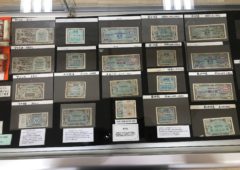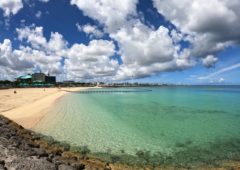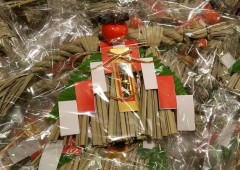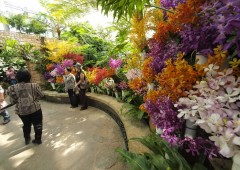2014.04.28
Patience is necessary to make wooden surfboard
By David Higgins
On Okinawa Island there are many things that can inspire one’s creative juices to flow. One Okinawan resident that always has those creative juices flowing is Dan Bender. Not only is Dan Bender an amazing surfer and photographer, but he is also a surfboard shaper.
Two years ago Dan dreamed of making his own surfboard with his bare hands, unlike the machine-made surfboards that are currently flooding the market. Not only did Dan want to make his own surfboard, but he also wanted to use eco-friendly materials from the natural environment. Thus began his journey to craft a wooden surfboard.
Because Okinawa does not supply surfboard materials, Dan imported his materials from the United States. He knew he wanted the board to last a lifetime, so after careful research he chose bamboo due to its strength, durability and flexible nature. The only downside that Dan discovered was that the resin used to coat the bamboo added a little more weight than he had wanted.
The surfboard itself is hollow and each piece of bamboo is laid in narrow strips and glued together. Once the surfboard is glued together the next step is
to shape the rails. The rails are the edges of the surfboard where the deck meets the bottom. The shape of the rails controls the way in which the board responds during planing and turning. Thickness of the rail determines the surfboards buoyancy and response.
The shaping of the surfboard rails took Dan many grueling hours and took the advice from the M’s surf shop owner Mamoru-san. Mamoru-san is an experienced surfboard shaper and praises Dan’s work saying, “Dan’s wooden surfboard is unique, magnificent and he should be proud of all the hard work he has put into the craftsmanship of the board.”
Once you are satisfied with the surfboard shape, the next step is to glass it. The glassing process adds strength, flex, style, weight and seals the design inside. Usually a surfboard is glassed by laying strips of fiberglass cloth across the board, and coating it with polyester or epoxy resin. In the case of a wooden surfboard, the fiberglass is not necessary because wood is already strong and durable. Therefore, you would only need to coat the board with resin that protects it from some of the destructive properties of the water. After coating, you would just need to add the fins.
Dan’s advice for anyone wanting to shape their own surfboard, wooden or foam, is that, “Rome wasn’t built in a day. Have a lot of patience; there is a vast amount of shaping information and resources on YouTube. You also definitely want to check out the site www.woodsurfboardsupply if you are interested in making a wooden surfboard.”
So if your creative juices are flowing like Dan Bender’s and you would like to attempt to craft your own surfboard, just be aware that Okinawa requires you to purchase supplies that are sourced off the island. However, if you are determined enough, the satisfaction of creating your own magnificent craft that you can use to slide across the waves may be one of the greatest feelings in your life, and you can also cross one item off your bucket list!






 2024.06.08
2024.06.08 2024.05.25
2024.05.25 2024.04.26
2024.04.26 2024.04.22
2024.04.22 2024.04.10
2024.04.10 2024.01.31
2024.01.31 2024.01.02
2024.01.02 2023.12.27
2023.12.27 2023.11.16
2023.11.16






